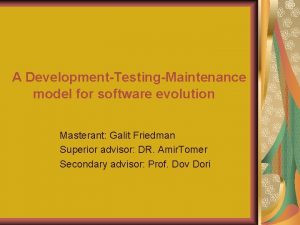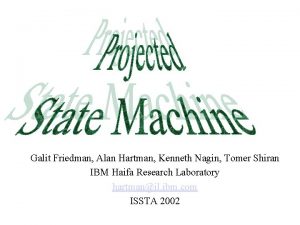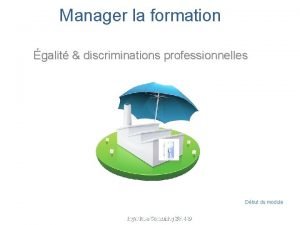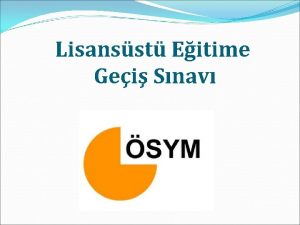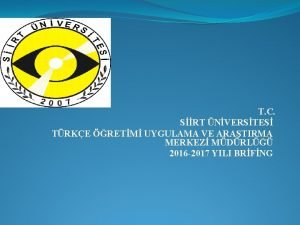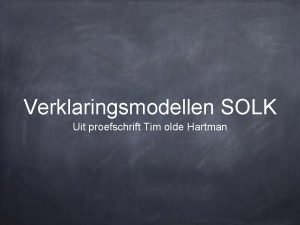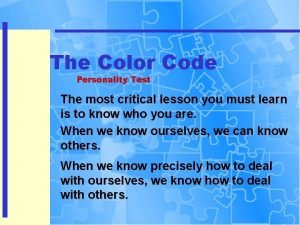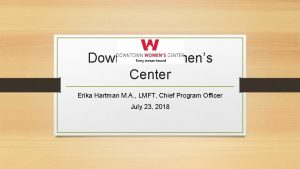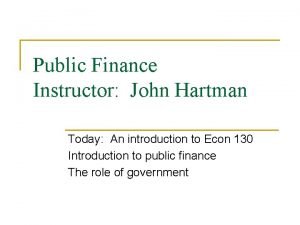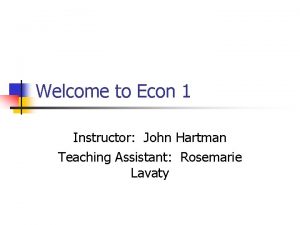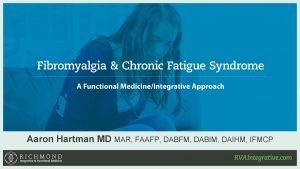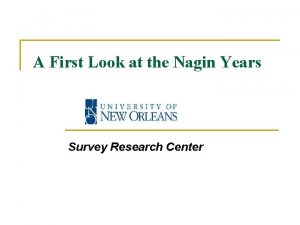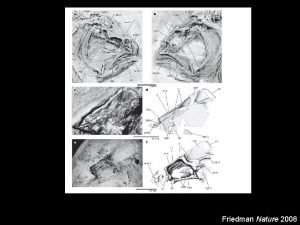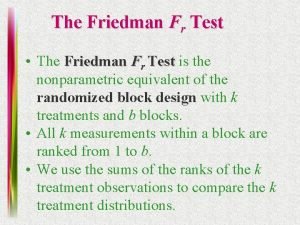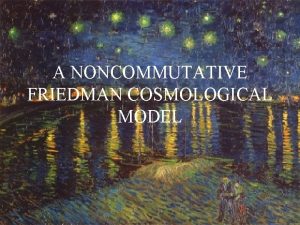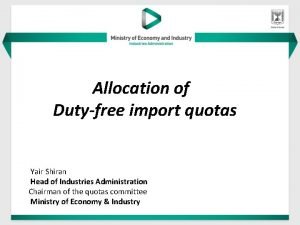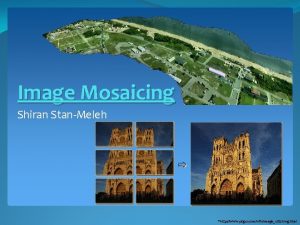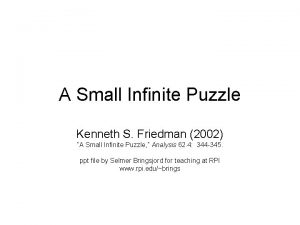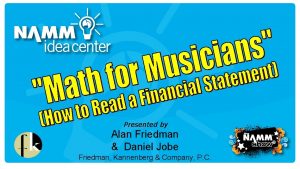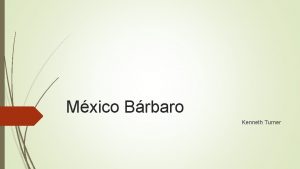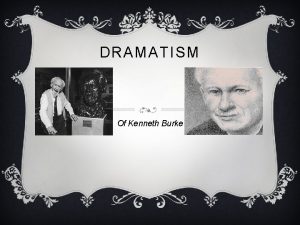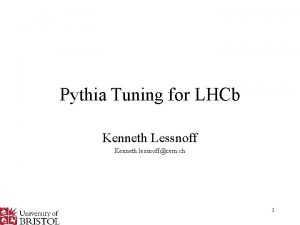Galit Friedman Alan Hartman Kenneth Nagin Tomer Shiran
















- Slides: 16

Galit Friedman, Alan Hartman, Kenneth Nagin, Tomer Shiran IBM Haifa Research Laboratory hartman@il. ibm. com ISSTA 2002

Outline • • • Specification-based testing EFSM models and test generation Projected State Machine Coverage Criteria Test Generation Algorithms Experimental & Industrial Experience

Specification-based testing Modeling Test Generation • Build a model based on the specifications • Derive test cases from the model • Test cases generated based on some coverage criterion • Test cases contain stimuli and expected responses Test Suite

EFSM Models • • Labeled directed graph Nodes (states) labeled with both control and data Arcs (transitions) labeled by stimuli to application Includes expected responses to stimuli deposit 1 2 2 OK OK fail Start 0 withdraw - 0 0 1 fail OK OK deposit withdraw

Problems with EFSM • State space explosion • Test case explosion

Test Generation • Extracting a set of paths from the EFSM • How do you choose which paths? • Coverage criteria! Star t 0 - dep osit 1 OK dep osit with draw 0 fail 2 with draw OK 0 OK dep osit 2 fail with draw 1 OK

Projected State Machine deposit 1 2 2 OK OK fail Start 0 withdraw - 0 0 1 fail OK OK deposit fail OK Start - withdraw fail OK

Coverage Criteria I • CC_State_Projection on <exprlist> • Generate a set of test cases – one through each equivalence class of states in the projected state machine • E. g. CC_State_Projection on action; result; deposit fail OK Start - withdraw fail OK

Coverage Criteria II • CC_Transition_Projection from <exprlist> to <exprlist> • E. g. CC_Transition_Projection from action; to action; result; • Equivalent to Carver and Tai’s CSPE-1 coverage criterion (Constraints on Succeeding and Preceeding Events) IEEE TSE 1998 • Controllable stimuli: Start, Deposit, Withdraw • Observable results: Fail, OK

Other coverage criteria for TG • Hartmann et al. ISSTA 2000 – transition coverage of data partitions • Offut & Abdurazik UML 1999 – explicit test purposes, transition coverage, predicate coverage of transitions • Jeron & Morel CAV 1999 – test purposes • Amman et al. FME 1998 – mutation coverage • Henniger & Ural SDL 2000 – define-use coverage on message flow graph

Test Constraints • Forbidden classes of states • Forbidden classes of paths • E. g. TC_Forbidden_State buffer=2; deposit Forbidden 1 OK Start 0 withdraw - 0 0 1 fail OK OK

Test Generation Algorithm • Traverse the whole EFSM reachable state space – Use BFS, DFS, or CFS – Record data on reachable coverage tasks – including random representative selection – Eliminate forbidden configurations • Extract a path to each selected task representatives • When state space too large – generate on-the-fly

Experiments • Buffer, Readers and Writers, Gas Station, Sliding Window Protocol, Elevator Control. • Use different projections to obtain a hierarchy of test suites of varying strength. • More projection variables created larger test suites with increased power of defect detection • Use test constraints to partition the state space, enabling measurable coverage of well-defined subsets of behavior

Distributed File System • Statistics: • FSM 370000 states, 290 test cases, 729 coverage tasks • Original Test: 12 PM, 18 defects (10 severity 2) • Our test: 10 PM, 15 old defects (10 severity 2) 2 new defects • Bottom Line – We made a convert

Call Center • • Two FSM models 37 defects Responsiveness to changes in spec. Reuse of function test for system test

Conclusions • Flexible coverage criteria for a hierarchy of test suites • FSM constraints help with state explosion • Systematic and automated methodology • Eases reuse and maintenance of test suites • Successful in detecting faults and communicating error scenarios
 Abiteboul origin
Abiteboul origin Galit friedman
Galit friedman Yasmine galit
Yasmine galit Tömer tipdil sınavı çıkmış sorular
Tömer tipdil sınavı çıkmış sorular How to understand graphs and charts
How to understand graphs and charts Harran tömer
Harran tömer 11353 reed hartman hwy suite ll50
11353 reed hartman hwy suite ll50 Tim olde hartman
Tim olde hartman Color coding test
Color coding test Adrianna john-hartman
Adrianna john-hartman Anisha patel family feud
Anisha patel family feud Adrianna john-hartman
Adrianna john-hartman Quilantan entry evidence
Quilantan entry evidence Erika hartman
Erika hartman Adrianna john hartman
Adrianna john hartman Adrianna john hartman
Adrianna john hartman Aaron hartman functional medicine
Aaron hartman functional medicine
